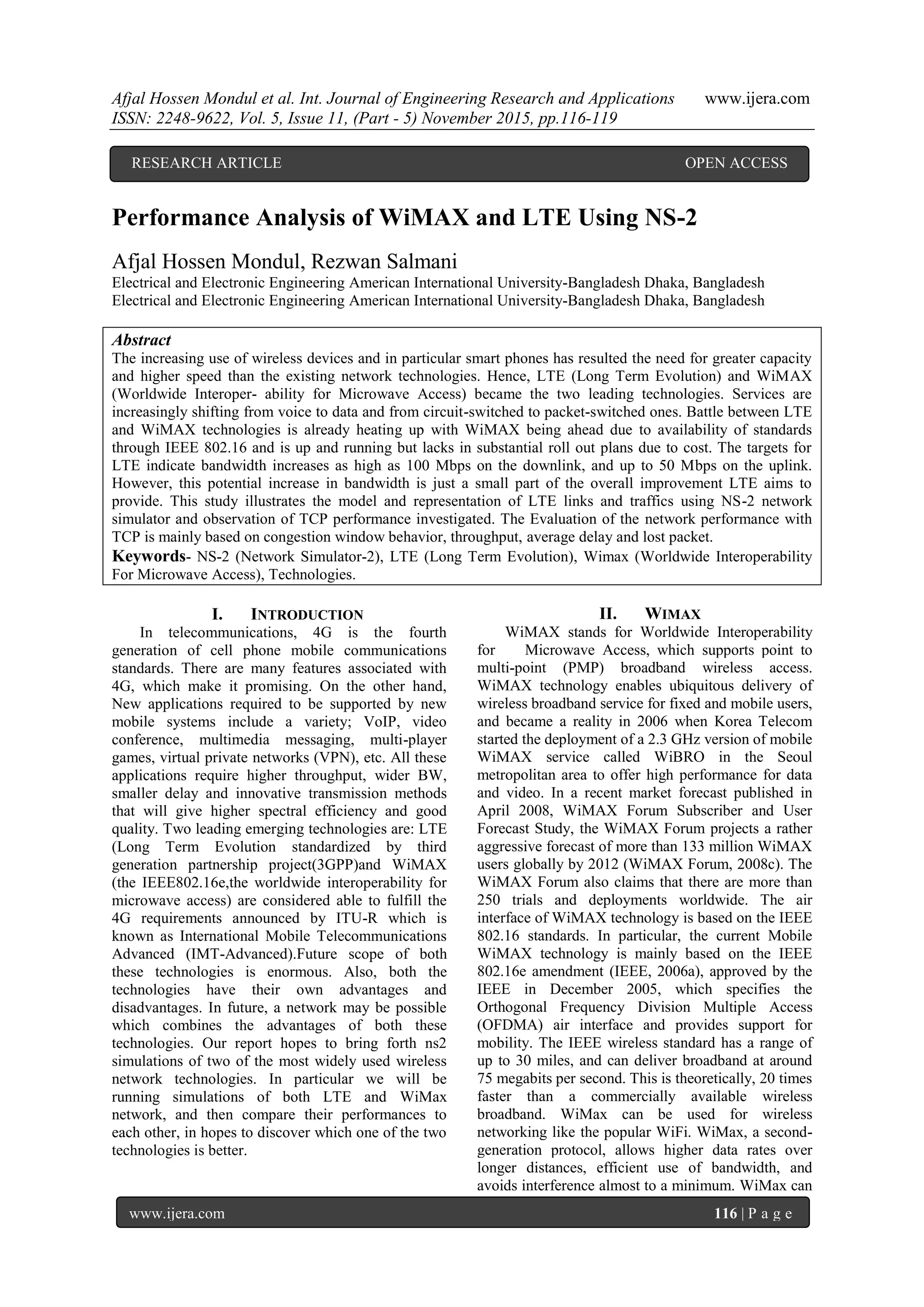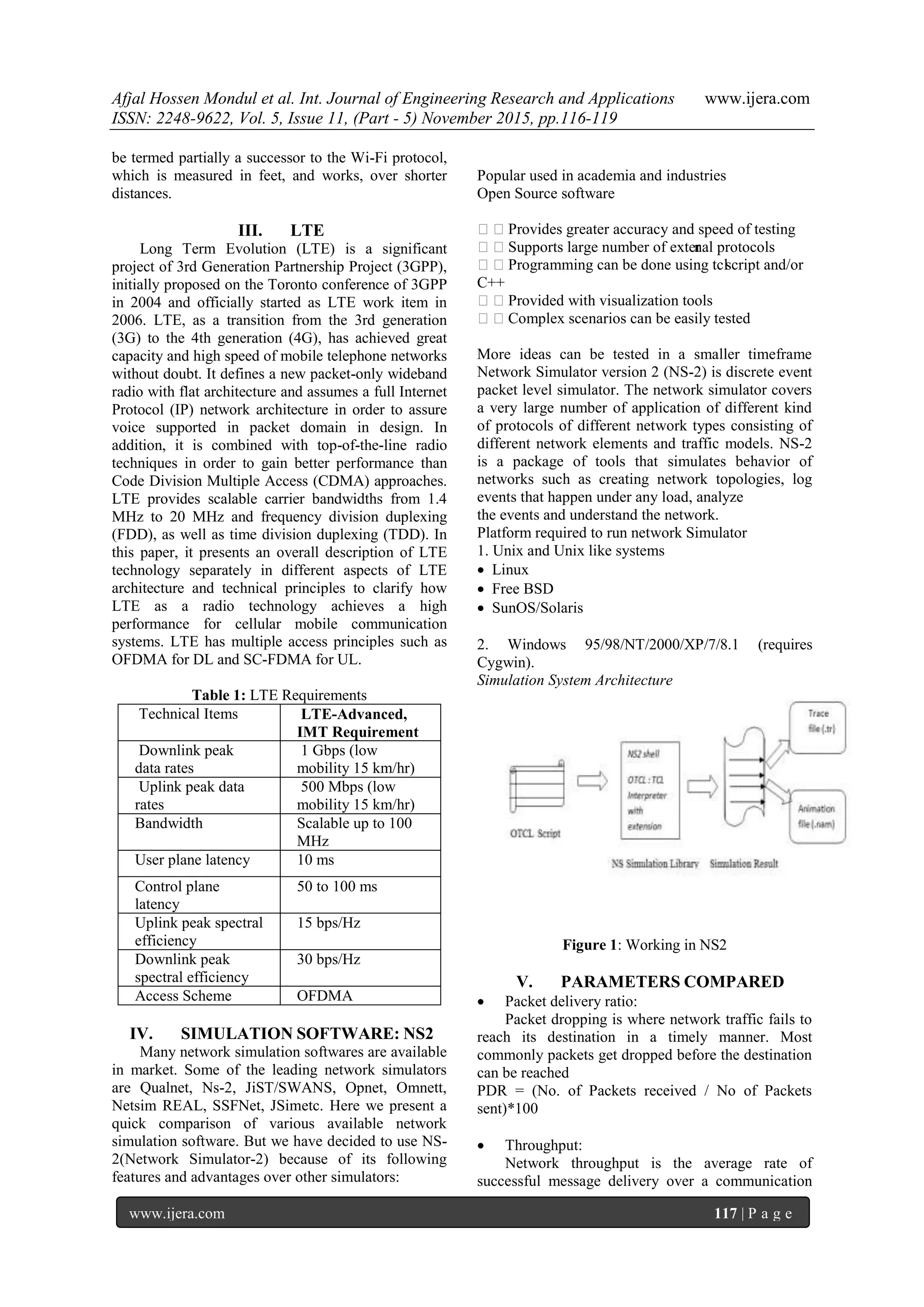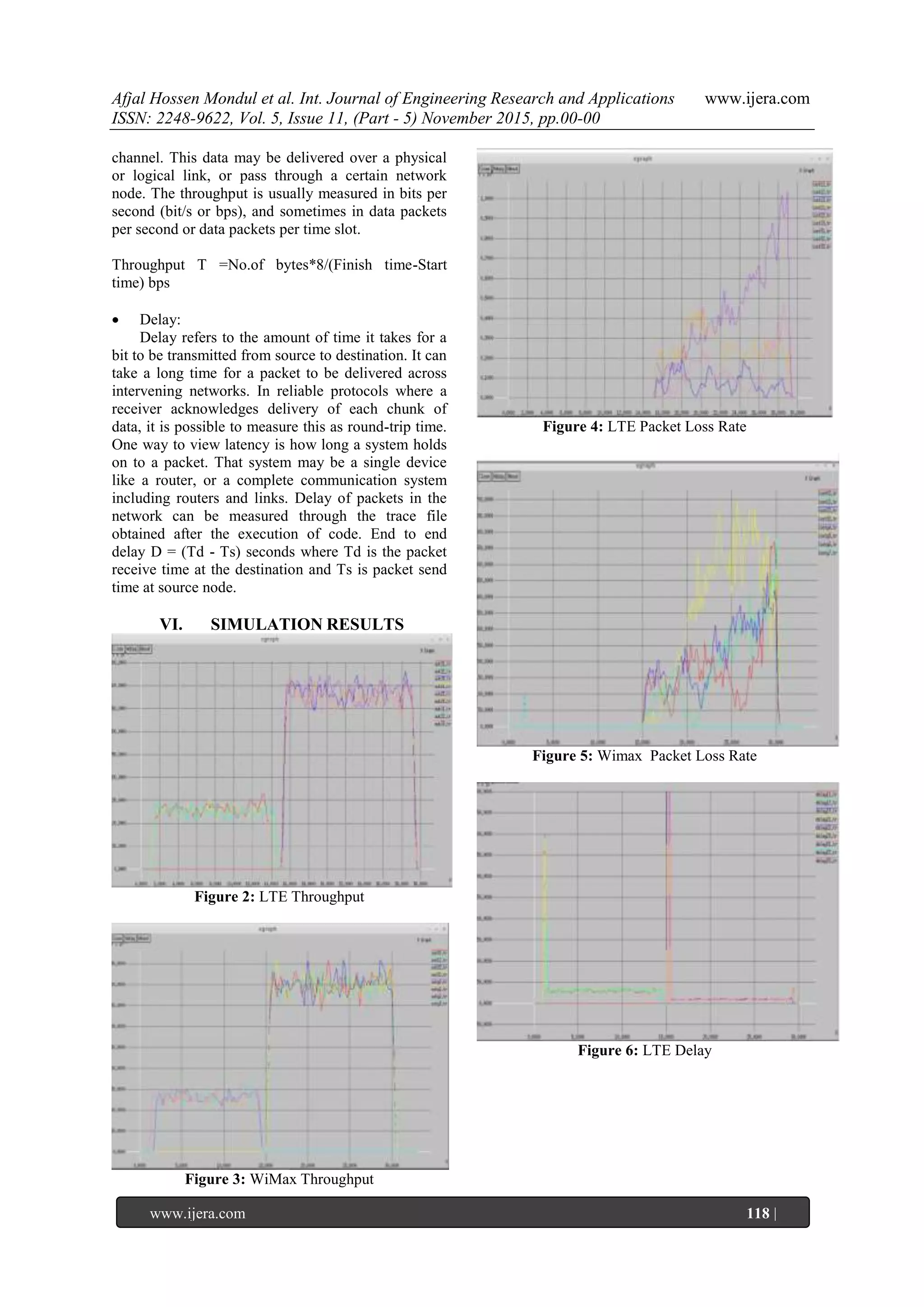This paper presents a performance analysis of LTE (Long Term Evolution) and WiMAX (Worldwide Interoperability for Microwave Access) technologies using the NS-2 network simulator. It highlights the growing need for advanced network capabilities driven by increased wireless device usage, especially smartphones, and compares the two technologies in terms of throughput, delay, and packet loss. The results indicate that while both technologies perform similarly, LTE shows marginally better performance, particularly for voice calls over the internet.



![Afjal Hossen Mondul et al. Int. Journal of Engineering Research and Applications www.ijera.com
ISSN: 2248-9622, Vol. 5, Issue 11, (Part - 5) November 2015, pp.116-119
www.ijera.com 119 | P a g e
FIGURE 7: WIMAX DELAY
VII. FUTURE IMPROVEMENTS
For future work individuals may choose to
implement the 802.11ac standard for WiMax instead
of our 802.11g standard. This will undoubtedly result
in a simulation more concurrent with today’s
technologies. Individuals may also implement larger
traffic to represent high-definition video calling by
users.
VIII. CONCLUSION
For our report we have brought forth ns2
simulations of LTE and WiMax, currently the two
most widely used network technologies. Using the
capabilities of ns2 we have successfully simulated
and collected data from both the LTE and WiMax
topologies. From the data, it can be seen from their
established graphs that the throughput, delay for both
technologies are very similar. Small performance
differences in the two technologies can be seen from
the packet loss and delay graphs, which show LTE as
the prevailing technology. As a result, it is fair to
conclude that LTE provides a more fluid experience
when performing voice calls over the internet.
Although LTE has prevailed as the better technology.
REFERENCES
[1] Information Sciences Institute, The Network
Simulator, http://www.isi.edu/ nsnam/ns/,
June 2011
[2]. The ns-2 network simulator, retrieved from
http://teacher.buet.ac.bd/ashikur/ns2/,Septe
mber 2011
[3]. The SSF Research Network, retrieved from
http://ssfnet.org/, September 2011
[4] OPNET simulator, retrieved from
http://www.opnet.com/, September 2011
[5] 3GPP R1-072261, LTE Performance
Evaluation-Uplink Summary, May 2007
[6]. Tejas Bhandare, “LTE and WiMAX
Comparison”, Santa Clara University, 2008,
White Paper
[7] WiMAX Forum White Paper, Mobile
WiMAX Part I: A Technical Overview and
Performance Evaluation, August 2006
[8] LTE Deployments, retrieved from
http://ltemaps.org/, March 2015
[9] Dieter Eberle, LTE vs. WiMAX 4th
generation telecommunication networks,
2010
[10] WiMAX Deployments, retrieved from
http://www.wimaxmaps.org/, March 2015
Authors Profile
Md. Afjal Hossen Mondul Pursuing
Masters of Electrical and Electronic Engineering
from American International University-Bangladesh
(AIUB). He received his BSc in Electrical
Engineering from AIUB in October 2013. Presently
he is involved in network simulator research. I’m
interested in networking and telecommunication
which made me to do this paper.
Md. Rezwan Salmani is an Assistant
Network Engineer of Spectrum Engineering
Consortium Ltd. He received his BSc in Electrical
and Electronic Engineering from American
International University Bangladesh (AIUB) in 2013.](https://image.slidesharecdn.com/s51105116119-151212111441/75/Performance-Analysis-of-WiMAX-and-LTE-Using-NS-2-4-2048.jpg)